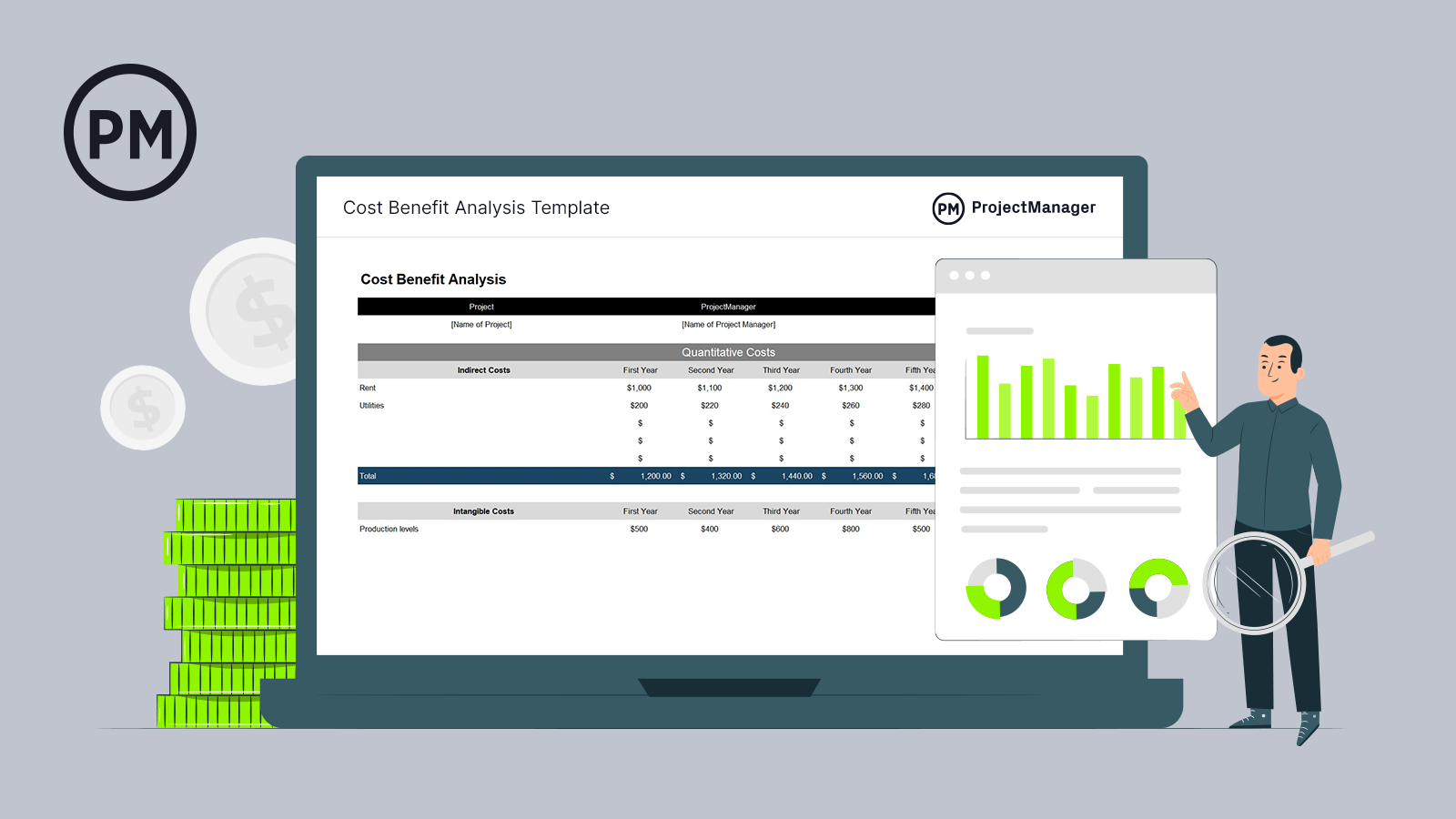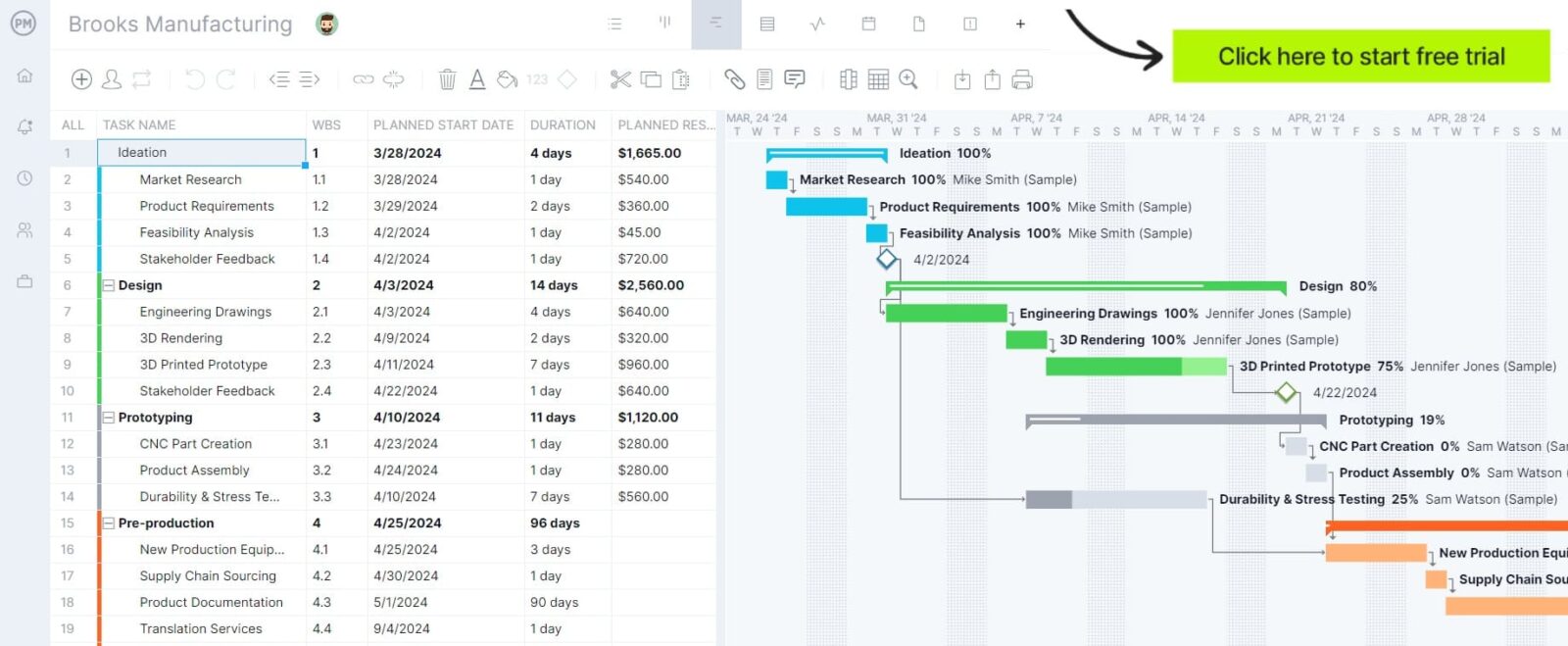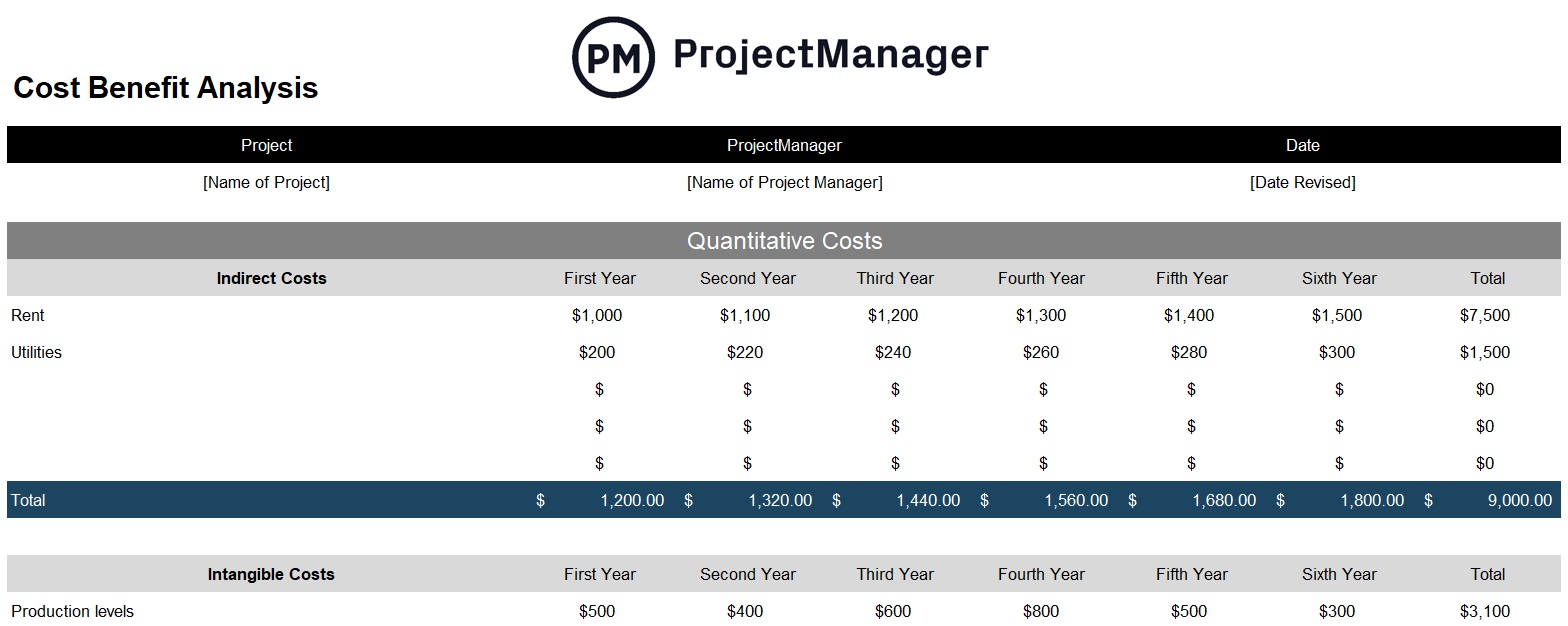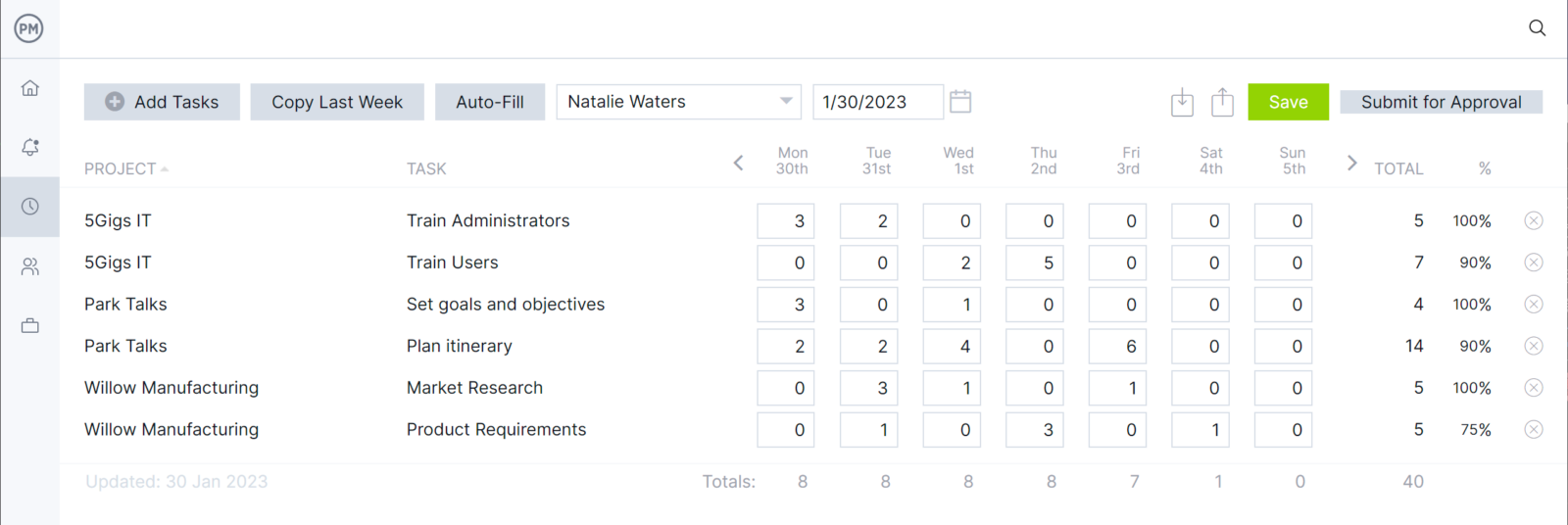Whether you’re managing a project in construction or manufacturing, keeping costs down is paramount. The lower your costs, the higher your profits. It’s as simple as that. This is why cost control techniques are so important in project management and business administration.
To understand cost control methods, let’s first define what cost control is and then we’ll explore the steps you can take to implement cost control. There are also a number of cost control techniques that can help, which we’ll also outline. Learn how strategic cost management techniques can help you better manage construction or manufacturing projects.
What Is Cost Control?
Cost control is a practice performed across businesses in most industries. Cost control works by identifying and reducing expenses to increase the profitability of the company. Cost control as a process begins with estimating costs, making a budget and then implementing cost control methods.
Actual financial results are compared with the budgeted expectations and if the actual costs are more than what was budgeted, actions to reduce those costs must be implemented.

Get your free
Cost Benefit Analysis Template
Use this free Cost Benefit Analysis Template for Excel to manage your projects better.
Comparing costs is but one way to analyze the financial performance of an organization or project. Through this analysis, companies can make more accurate and informed projections to help them minimize their costs and identify areas where they’re overspending. Depending on the type of business, vendor management can also be part of the cost control process as supplies can be a significant cost and potential area of savings.
These costs must also be managed and project management software can help you identify, manage and control costs. ProjectManager is award-winning project management software that has real-time Gantt charts that help you track project cost variance. Once you’ve set a baseline on our Gantt chart, the live dashboard automatically collects project costs and displays them in an easy-to-read graph that shows the actual, planned and budgeted costs. Unlike lightweight tools, there’s no lengthy setup required. Once you’ve set up the Gantt chart, you can monitor project costs in real time on views like the project dashboard.

Cost Control Techniques
The more accurate your estimates, the more profitable you’ll be. We’ve already mentioned that, but it’s worth repeating. Estimating can be daunting. It’s far from an exact science, but it’s critical in cost control. We’ve outlined several cost control techniques you can apply to make better cost forecasts.
1. Cost-Benefit Analysis
One way to control costs is by not taking on a project that is never going to give you the return on investment you want. That’s where a cost-benefit analysis comes in handy. It’s a way to estimate the strengths and weaknesses of the project to determine if it’s worth taking on the risk. Therefore, it determines if the investment is sound, as in benefits outweighing costs.
2. Earned Value Management
Earned value management uses costs, schedule, technical scope and risk to measure project performance against a baseline. This helps to identify issues as well as forecast costs by measuring performance against the planned value, actual cost and earned value.
3. Cost Reduction
The best cost control is to reduce costs. There are many ways to implement cost reduction in projects, from proper allocation of resources to mentoring and retaining your team. Project managers should explore all aspects of cost reduction, whether that’s process improvements, reducing project scope or even outsourcing as needed.
4. Cost Accounting
Cost accounting is the monitoring, analyzing and recording of variable and fixed expenses related to the production of goods and services. Through this process, project managers can adopt greater productivity measures, make better strategic decisions and keep to their budget. This is all done, as will cost control, to raise the net profit margins through budgeting, forecasting, the price of the product or service and aligning with corporate strategy.
5. Activity-Based Costing
This cost control technique assigns overhead and indirect costs to related products and services and recognizes the relationship between costs, overhead and manufactured products. It assigns indirect costs to products less arbitrarily than more traditional methods of cost control. An issue with this type of cost control technique, though, is that indirect costs such as management and office staff salaries can be difficult to assign to a product.
6. Budgetary Control
Simply put, budgetary control is the management of income and expenditure. Like many cost control techniques, it’s all about comparing the actual costs against the planned costs to identify if there’s a discrepancy between them.
7. Target Costing
Target costs are when a company plans for the price points, product costs and margins it wants to achieve for its new product. If the manufacturing of this product cannot meet these constraints, then the project is shelved. This provides manufacturers with a way to monitor products from the earliest design phase throughout the project’s life cycle to help them invest only in those projects that will increase the company’s profitability.
8. Total Cost of Ownership (TCO)
Total cost of ownership is an estimating process that determines how much money will be spent on an asset over the course of its useful life. That means, from the point of purchase to when the asset is disposed of. This helps to avoid buying assets that won’t bring a return on investment, as the cost to buy, use and maintain is more than the benefit the asset provides.
9. Value Engineering
While its focus is broader than just reducing cost, value engineering is used in cost control to optimize the balance between cost, function and quality. It involves analyzing the functions of a project, product or service to identify ways to achieve the desired outcomes at the lowest cost without compromising quality or performance.
10. Job Costing
This is primarily used in industries where products or services are customized ,such as construction, manufacturing and professional services. Job costing consits in tracking costs related to specific jobs or projects, making it possible to control and monitor costs on a job-by-job basis. It tracks direct costs, identifies cost overruns, improves cost estimation, helps to allocate indirect costs, monitors performance and more.
11. Cost Variance Analysis
Cost variance analysis involves comparing the actual costs incurred in a project or operation to the budgeted or standard costs. It helps identify discrepancies between the planned and actual performance, enabling organizations to take corrective actions to stay within budget, optimize operations and improve overall efficiency.
12. Target Costing
Use target costing as a proactive cost control technique. It focuses on managing costs by setting a target cost for a product or service based on its desired selling price and profit margin. The objective is to meet the target cost without compromising quality, functionality or customer satisfaction. This technique is commonly used in industries where competition is fierce, and price sensitivity is high, such as manufacturing and automotive industries.
13. Zero-Based Budgeting
This method of budgeting is where every expense must be justified for each new period, starting from zero, rather than relying on previous budgets or historical expenditures. It’s an approach that ensures that every dollar spent is scrutinized and aligned with the organization’s goals, making it a powerful tool for cost control by enhancing cost efficiency, encouraging accountability and promoting better financial decision making.
14. Break-Even Analysis
Break-even analysis is an effective cost control technique that helps businesses determine the point at which they cover all their costs and begin to make a profit. It identifies the level of sales needed to break even–i.e., when total revenues equal total costs, and no profit or loss is made. This analysis is crucial for understanding the relationship between fixed and variable costs and helps businesses manage their cost structure and profitability.
15. Life Cycle Costing
Another effective cost control technique is life cycle costing, which involves assessing the total cost of a product or project over its entire lifespan, from design and development to operation and disposal. This approach helps organizations make more informed decisions about costs, by not only considering the initial costs but also the long-term expenses related to maintenance, operation and eventual decommissioning or disposal.
How to Control Costs
Being able to monitor costs in real time is important, but that’s only part of a thorough control cost process. This is a process that needs constant monitoring, but there are steps that you can implement before the project begins to set the stage for controlling costs. Follow these steps to better control costs in your project or business.
1. Identify Your Resource Requirements
Controlling costs starts with planning. One of the most costly aspects of any project or business is the resources needed to do the work. This includes labor, but also equipment, materials and anything required to execute tasks. By identifying these resources with the use of a work breakdown structure to identify deliverables and tasks, project managers can list the resource requirements with greater accuracy.
2. Estimate Costs
Now that you’ve listed the resource requirements, you’ll want to estimate how much each of those will cost. The more accurate you are, the better, of course. Therefore, you’ll want to meet with the project team as they have the experience and can give you more realistic estimates. There’s also historical data that can help you determine the cost compared to what similar projects cost. Finally, don’t neglect expert opinion. Seek it out.
3. Create a Budget
Knowing your deliverables, tasks and resources and having an accurate forecast of costs means that you’re ready to develop a budget. Again, the more accurate the budget, the more likely you can adhere to it and stay profitable. Creating a budget starts by allocating costs to each task on the project schedule. All the activities on a workflow will have a line item cost in the budget.
4. Track & Control Costs
Once the project execution phase begins, so does the monitoring and controlling phase. As teams work on their tasks, the project manager will keep track of their work and the associated costs. Setting a cost baseline captures the budget and makes it easier to compare actual costs to the budget to make sure there’s no overspending. If there is, then the schedule or scope needs to be adjusted to make up for the extra cost if you want to keep the project balanced.
Free Cost-Benefit Analysis Template
One of the best ways to know whether a project is viable in terms of cost is to use a cost-benefit analysis. Download this free cost-benefit analysis template for Excel to determine if a project is viable from a cost perspective. It helps you quickly crunch the numbers and helps determine if the project is worth undertaking.

Importance of Cost Control In Construction
The importance of cost control should be clear, but how does it translate across various industries? Let’s take construction, where cost control is a vital tool to keep expenses under control. This is done by managing labor, materials and overhead costs to keep to the budget. Estimating, as always, is key, but so is monitoring throughout construction otherwise it’s possible to burn through the budget and lose most if not all of a general contractor’s budget.
Importance of Cost Control In Project Management
As in any industry, cost control in project management follows similar lines of collecting actual costs and comparing them to the planned costs of the project. Therefore, cost control is essential to ensure that you’re not spending too much, minimizing costs and revealing areas in the project where costs are spiking so they can be controlled.
Importance of Cost Control In Manufacturing
Manufacturing is no different when it comes to reaping the benefits of cost control. It allows manufacturers to identify waste in their production and work towards eliminating it. But it’s not merely during the manufacturing process where cost control can be effective, but also with administrative costs and even in the selling and distribution process.
How ProjectManager Helps With Cost Control
In order to implement cost control more effectively you’ll want to use project management software. ProjectManager is award-winning project management software that delivers real-time data to help project managers make more informed decisions. More than the accuracy of our data is the wide spectrum of our features that give you the power to monitor and control costs to keep projects within the budget and capture overspending quickly so they can be resolved and not negatively impact your profit margin.
Manage Labor Costs With Online Timesheets
Identifying and tracking resources is an important part of cost control. Labor isn’t only your most important resource but often your most expensive. Our secure online timesheets allow you to monitor the progress that each team member is making on their assigned task to ensure that they’re keeping to the schedule. We also streamline the process by making it easy to carry one task from one week to the next, automatically add them and lock timesheets once submitted.

Keep Teams Productive With Workload Charts
Being able to monitor your team’s workload helps make sure they’re not overburdened with tasks, which leads to low morale and reduced productivity. Our color-coded workload chart makes it easy to see at a glance who has how many assignments. You can then balance the workload without having to leave the chart, making sure that everyone is working at capacity but not overallocated.

There are many other ways to avoid overspending on a project. Our risk management features, for instance, help you identify, track and mitigate risk in your projects, which can put an undue strain on your budget. Task management features keep teams productive and resource management tools help you identify, manage and track resources throughout the project.
ProjectManager is online project management software that connects teams whether they’re in the office, on the job site or anywhere in the world. Our collaborative platform lets you share files, comment at the task level and much more. Join teams at companies as diverse as Avis, Nestle and Siemens who are using our software to deliver successful projects. Get started with ProjectManager today for free.

